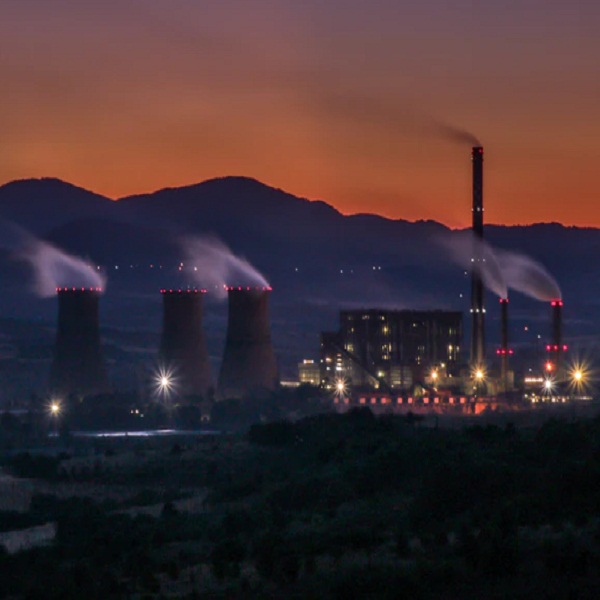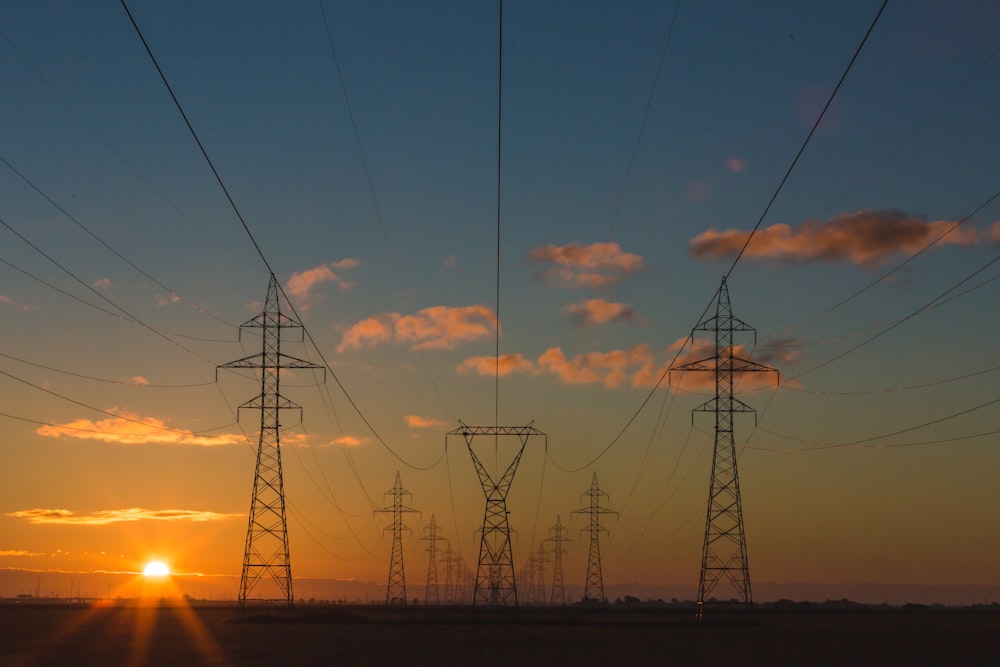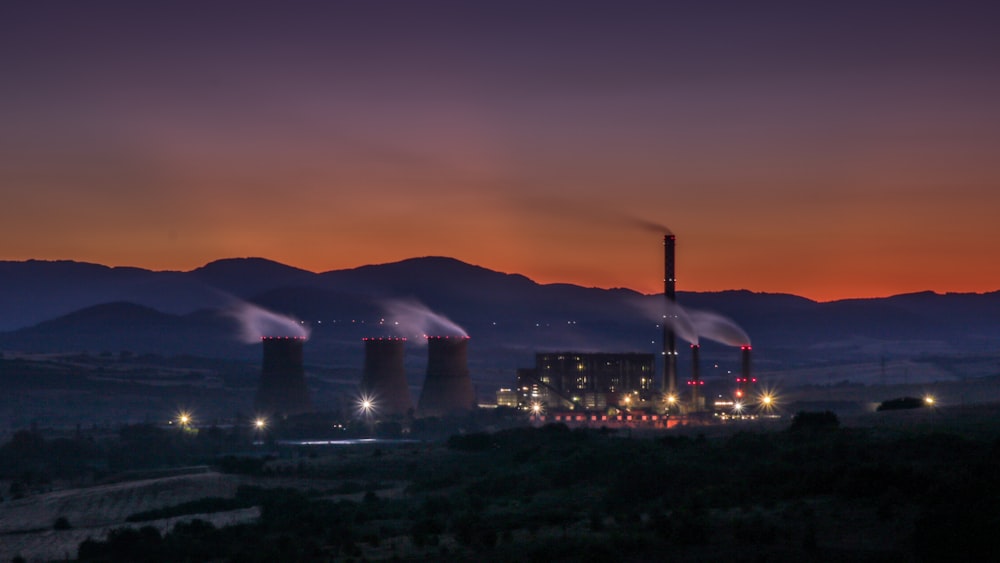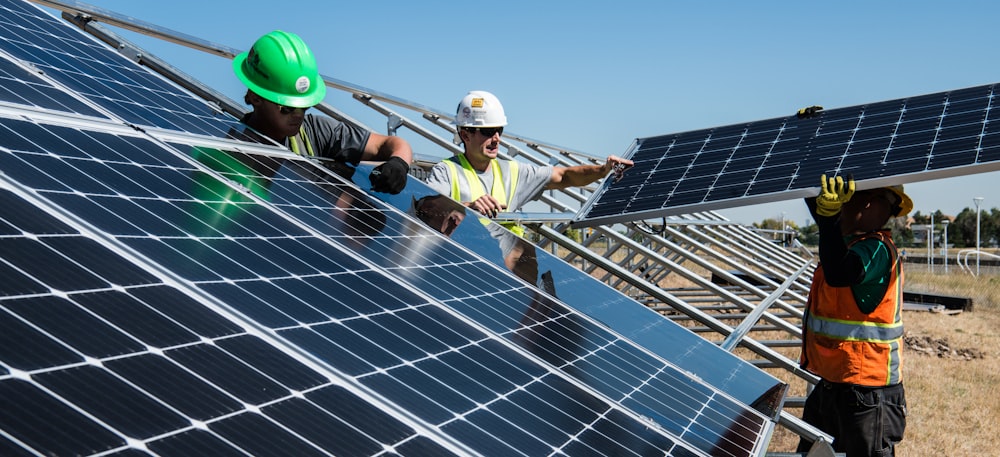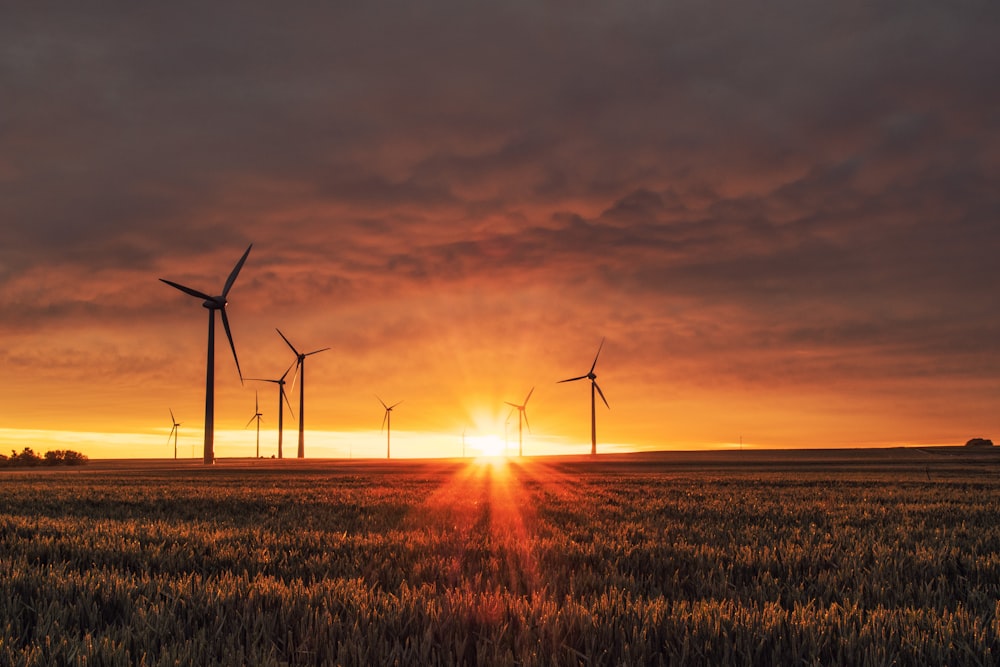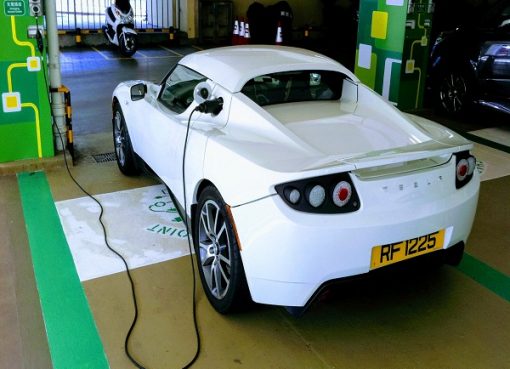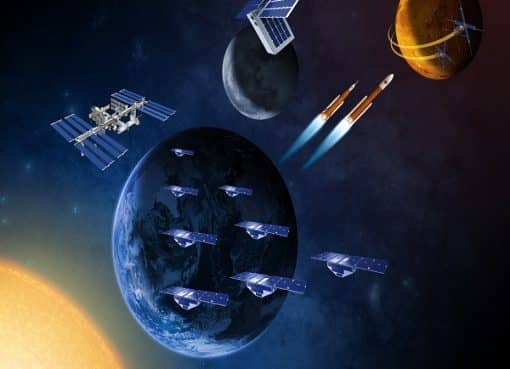As the world is anticipating the end of the COVID-19 pandemic, energy consumption in industry and services is likely to grow in 2021. In the longer term, the developing world should even increase its energy utilization. But what will be the impact of the 2021 context for the Energy Sector?
According to scenarios calculated by energy giant Total SE, this might lead to the growth of global primary energy demand by of 0.4% – 0.6% per year or a 25% increase by 2050. They also envisage massive electrification of transportation that will lead to decarbonization and will require rapid growth in renewables as a source of electricity.
But to make good predictions, it’s better to know from where we start. 2020 was a year tremendous shake down all around the world. So, let’s start by further exploiting the data to make some projections.
The Data: Bad time for a good time
The International Monetary Fund (IMF) had released last October, its comprehensive World Economic Outlook (WEO). After a global drop of 4.7% in the Gross Domestic Product (GDP), while the inflation still growing in 2020 (the global Consumer Prices Index, CPI, is growing almost steadily around 3.4%), a global (recovery) growth is projected in 2021. The COVID-19 pandemic has had a more negative impact on activity in 2020 than anticipated, and the recovery is projected to be more gradual than previously forecast. So, the GDP would first increase by 4.8% this year and then by more than 3% per year up to 2025. This growth is a bit slower than what was projected 6 months ago by the IMF, i.e. 5.4% and substantially smaller than the 6½ percentage points estimated for 2021 in the pre-COVID-19 projections of January 2020.
But data also suggest even deeper downturns for several economies and on commodities. Notably, Energy was hit hard with a reduction in 30.6% in Commodity Fuel (Energy) Index that includes Crude oil, Natural Gas, and Coal Price Indices.
.png)
Figure by Smart Phases Inc. (dba Novacab)
The pandemic has worsened in many countries, levelled off in others. The pandemic rapidly intensified in a number of emerging markets and developing economies, necessitating stringent lockdowns and resulting in even larger disruptions to activity than forecast. In others, recorded infections and mortality have instead been more modest on a per capita basis, although limited testing implies considerable uncertainty about the path of the pandemic. In many advanced economies, the pace of new infections and hospital intensive care occupancy rates have declined thanks to weeks of lockdowns and voluntary distancing.
I have done some Data Analytics on the raw data from the IMF. We’ve done a comparison over 10 years (5 past years from 2016 to 2020 and 5 forecasts years 2021 to 2025). The period up to 2020 is using the current data, while the period from 2021 up to 2025 is based on the IMF’s projections (and their assumptions). For the Oil Price, a simple average of the prices of UK Brent, Dubai Fateh, and West Texas Intermediate crude oil was done.
.png)
Figure by Smart Phases Inc. (dba Novacab)
This is projecting a deeper recession in 2020 and a slower recovery in 2021, while a high degree of uncertainty surrounds this forecast. Nevertheless, we clearly see the impact on Oil price: further volatility and steep drop (see the Orange bar on the chart). Synchronized & deep downturn surely to cause turmoil in the economies. We’ve already seen during the first-quarter that GDP was generally worse than expected (the few exceptions include, for example, Chile, China, India, Malaysia, and Thailand, among emerging markets, and Australia, Germany, and Japan, among advanced economies). High-frequency indicators point to a more severe contraction in the second quarter, except in China, where most of the country had reopened by early April.
Investments
In most recessions, consumption is affected relatively less than investment. But this time, consumption and services output have also dropped markedly. The Energy Sectors, and especially the Oil industry, have been hit hard. Firms have also cut back on investment when faced with precipitous demand declines, supply interruptions, and uncertain future earnings prospects. Thus, there is a broad-based aggregate demand shock, compounding near-term supply disruptions due to lockdowns. Oil futures curves indicate that prices are expected to increase thereafter toward $46. But it’s still about 25% below the 2018-2019 average while “Nonfuel” commodity prices are expected to rise marginally but still faster than assumed by the IMF in April.
So this is why in the coming months the Covid-19 Relief proposal from the new administration in Washington will be important, i.e. the $1.9 Trillion Proposal, notably for Battery market, artificial intelligence, wireless technology, clean energy.
“Imagine historic investments this research and development, to sharpen America’s innovative edge in markets where global initiative is up for grabs. The battery market, artificial intelligence, wireless technology, clean energy.” President-elect Joe Biden (January 15th 2021)
This is even more important because well before the pandemic, the global energy market was undergoing a huge transformation. And still, acceleration of the process is required. It is in the process of making energy cleaner and more reliable, to deal with problems like climate change. And time is of the essence here. According to Bloomberg New Energy Finance (BNEF), almost 50 per cent of the world’s electricity will come from renewable energy sources like wind and solar by 2050 and that needs to be pursued.
But this accelerated trend is making it difficult for energy companies that operate using only traditional methods. Utilities as well as other power companies need to find ways to bridge the energy demand and supply gap by increasing the use of renewable energy. Technologies like artificial intelligence (AI) offer new solutions to manage these changes and be ready for the next generation of the grid.
Artificial Intelligence boosting the recovery phase
According to Forbes, this energy transformation will see an explosion of growth in Artificial Intelligence (AI) utilization in the sector – up 50% from now to 2024 – to allow smart, 21st-century grids to become the gold standard, gradually replacing the “dumb” grids laid down in the late 19th – early 20th century in Europe, North America, Japan, China and beyond.
As renewable energy sources like solar and wind are variable in nature, the supply of power from them may not be in sync with consumer needs. There are times when conventional sources are still needed as a backup. Users also act as providers when the energy generated is more than their needs, and they send the remainder back into the grid. There is a massive amount of data available from multiple sources within the utility market. When the use of smart meters was growing and traditional meters were being replaced in the US, Oracle had reported that this would generate one billion customer data points each day, which was 3000 times more information than that from the old meters. This number has grown even more now. Smart grids, with embedded sensors for sending information to software and monitoring systems, can thus use AI to digitise the energy sector. In tandem with technologies like Big Data and the Internet of Things (IoT), AI will make it easier to balance demand and supply.
Access to clean, cheap, and reliable energy is at the very heart of development. Therefore, a lack of energy access is a fundamental impediment to progress that impacts health, education, food, and livelihoods. Universal access to affordable, reliable, and sustainable energy is the primary goal in emerging markets and advanced economies.
Yet, it will remain a mere goal unless innovative solutions and modern technologies overcome numerous energy-related obstacles, such as diversification and decentralization of energy production, changing supply and demand patterns, lack of sufficient power generation, lack of analytics needed for optimal management, poor transmission and distribution, affordability, and climate concerns.
Artificial intelligence (AI) and related technologies have the potential to address these challenges, which are more acute in emerging market nations, where efficiency issues are particularly problematic. These technologies can improve power management, efficiency, and transparency, and cut energy waste, lower costs, and accelerate the use of clean, renewable energy.
AI can be deployed to forecast renewable energy production as well as weather conditions. It can even predict short term, medium-term or long-term electricity demand.
Photo by Marc-Olivier Jodoin on Unsplash
AI can help in proactively maintaining infrastructure and predicting equipment failure and it especially true during disaster recovery. When Hurricane Irma struck South Florida in 2017, it reduced the required recovery time by more than 44% in some areas. Notably, it took 10 days to restore power and light, instead of 18 days, which was needed for the region to recover from the previous hurricane, Wilma. This time reduction was due to technologies such as AI predicting power availability and ensuring it is delivered where it is most needed without negatively impacting the system. Furthermore, AI systems can improve assessments of damages and optimization of decision making thanks to faster access to imagery and information—within the first 12 to 24 hours—after the disaster has subsided. With climate change accelerating its pace, we can definitely think of other disasters in 2021 that would be better responded to with AI. So, we should see this technology further introduced in the grid for that purpose on top of many others in 2021.
AI-driven optimisation is vital to maximising efficiency with real-time monitoring. Predicting what energy output a solar or wind farm in a specific location might achieve can attract investments. US-based PowerScout’s AI platform collects data from millions of households and predicts whether or not a given household will be investing in solar energy. It can easily filter out potential investors, who can then be offered great returns. This decreases the risks involved significantly and makes the energy sector more competitive compared to previously used energy sources.
Fault prediction is another major AI application in the energy industry that should take more importance in 2021, where equipment failure is common, with potentially significant consequences. AI, coupled with sensors, can monitor equipment and detect failures before they happen, thus saving resources, money, time, and lives.
For example, predictive diagnostics are currently used to predict problems that could potentially shut down geothermal power plants, yielding steady energy output. IoT and AI can optimize preventive measures such as chemical agent sprays to avoid turbine shutdowns. It improves the efficiency and reliability of geothermal power plants.
Cyberattacks, fraud or even energy theft is more common than one might think.
AI can combat energy piracy by enabling utilities to scan individual consumers’ usage patterns and payment history and alert them about suspicious discrepancies between billing and usage data.
The result is better integration of large-scale renewable energy systems, thereby lowering peak demand, ensuring efficient power transmission, and reducing operational and management costs—all of which are essential to meet economic and environmental needs.
In 2018, the SLAC National Accelerator Laboratory at Stanford University came up with a software platform called VADER (visualisation and analytics of distributed energy resources). The platform can model potential changes in connectivity and the behaviour of various resources on the grid using AI, for resource optimisation.
While the training speed of algorithms has improved due to better computational power, the use of AI comes with threats like cyberattacks on an automated power grid. Applying AI in the right way is crucial to successfully deploy it on a large scale. The poor quality of training data can lead to false predictions, ending up in a lot of time and effort being spent on data categorisation and integration, rather than on the task at hand. Other issues include lack of staff with the necessary expertise, as well as problems linked to data transparency, performance and latency. But given the potential benefits, as technologies become more advanced and pain points like these are solved, there will be enormous adoption of AI worldwide in the energy sector.
The technology also empowers consumers through a two-way communication model with utility companies. The customer experience is a top priority for any business. Repetitive customer-side tasks like payments, basic inquiries related to billing, complaints, changes in customer details and the like can be completed through virtual agents and chatbots, saving time and money. In rural areas especially, invoices and other records are still hand-written. With technologies like natural language processing, AI can help in digitising these records. Users can also be instructed on how to install or activate products related to energy management via AI and computer vision if they want to set them up in their homes. DroneDeploy uses computer vision and AI to create maps and 3D models for electric utilities by analysing data.
Though AI holds considerable potential to improve power generation, transmission, distribution, and consumption, there is a need to educate the AI industry more deeply on the power sector aspects. Besides, there are regulatory restrictions in cloud-based applications, which are widespread and central to AI solutions. Integrating different data sources and ensuring representativeness given the diversity within the data is also challenging. Like other sectors that are increasingly applying AI technology, if the power sector can address all these challenges, AI plays an important role in the energy sector.
If designed carefully, AI systems can be handy in the automation of routine and structured tasks in the power grid, improving the planning, operation, and control of power systems. Thus, in many ways, AI technologies are closely tied to providing clean and cheap energy, which is essential to development.
The energy landscape of the world around us is evolving. The transition towards less carbon-intensive consumption is the need of the hour to save our environment. This transition is made possible due to the recent technological advancements, including AI and cloud computing. They are making the industries responsive to real-time data, leading to innovations. Artificial intelligence, combined with the Internet of Things, especially in a smart grid setting, is disrupting conventional wisdom. It is enabling the continuous collection and synthesis of an enormous quantity of data from millions of sensors to make wise, data-backed decisions.
Smart grids, IoT, cloud computing and big data in the post-pandemic era
Smart grids, embedded with an information layer of advanced sensors and smart meters for data collection, storage, and analysis, enable a real-time and seamless interaction between multiple remote points and components across the grid, so they can better respond to quick changes in energy demand or urgent situations. It creates a current, precise, and integrated view of the entire power system, facilitating better grid management.
Paired with powerful big data analytics, cloud computing, and the internet of things (IoT), these smart-grid elements can improve the reliability, security, and efficiency of electricity transmission and distribution networks. This data analysis can be further used for various purposes, including fault detection, predictive maintenance, power quality monitoring, and renewable energy forecasting.
Maintenance
National Grid in the UK has recently turned to drones to monitor wires and pylons transmitting electricity from power stations to thousands of homes and businesses. Equipped with high-resolution cameras, these drones are particularly useful in fault detection due to their ability to cover vast and difficult terrain. They cover 7,200 miles of overhead lines across England and Wales. AI is then used to monitor power assets’ conditions and determine when they need to be replaced or repaired.
Photo by Viktor Kiryanov on Unsplash
Energy efficiency and decision making
The digital transformation of home energy management and consumer appliances, using smart devices such as Amazon Alexa, Google Home, and Google Nest, enables customers to interact with their thermostats and other control systems to monitor their energy consumption. They allow automatic meters to use AI and optimize energy consumption and storage. For instance, it can trigger appliances to be turned off when power is expensive or electricity to be stored when power is cheap, or solar rooftop energy is abundant.
Furthermore, in deregulated markets like the United States, where consumers can opt for their energy providers, AI empowers consumers by allowing them to determine their provider based on their energy source preferences, household budget, or consumption patterns.
Notably, researchers at Carnegie Mellon University developed a machine learning system named “Lumator” that combines the customer’s preferences and consumption data with different tariff plans, limited-time promotional rates, and other product offers. It then provides recommendations for the most suitable electricity supply deal. Since it becomes familiar with the customer’s habits, it can automatically switch energy plans when better deals are available without interrupting supply.
Prevention of losses due to informal connections
Losses due to informal connections constitute another challenge for the power sector. AI can be used to spot discrepancies in usage patterns, payment history, and other consumer data to detect these informal connections. When combined with automated meters, it can also improve monitoring, optimizing the costly, and time-consuming physical inspections.
For instance, Brazil has been suffering from a high rate of nontechnical losses that include informal connections and billing errors. The University of Luxembourg has developed an algorithm that analyzes information from electricity meters to detect abnormal usage. The algorithm managed to reveal problem cases at a higher rate than most other tools when applied to information over five years from 3.6 million Brazilian households.
In short, the power sector has a promising future with the advent of AI-managed smart grids that allow two-way communication between utilities and consumers. This is opening the door to broader spread DER.
DER: Customers see it as a mean to have more control over their power
In 2021, customers are considering a variety of models to deploy DERs, moving from owning and operating their own assets to partnering with outside suppliers, including more sophisticated energy providers such as DER product and service providers and ESCOs.
DERs are trending heavily upward, but there is immense room for growth. A majority of end-users cans offset a third of their load with some type of distributed energy. One of the reasons they are gaining popularity is because they educate customers while also helping them save money. Once a DER is employed, the energy manager will have real-time information on their energy spend, so they will see new trends in their usage and develop a more widespread understanding of how it ties into their business model.
Another reason for the acceleration of DER integration is that they are seen as a way to mitigate the effects of power outages. With resiliency and reliability as top concerns, having a back-up power source during a primary grid emergency has become a factor in power management decisions. Nevertheless, even as resiliency concerns grow, few perform a risk analysis, have calculated the actual costs, or know the true impact on their business.
And it makes sense for the bigger players as well. Getting ahead of a power outage can save business millions of dollars. Extreme weather, power surges, and unforeseen circumstances can all lead to costly situations that could jeopardize your business’s integrity and its ability to serve its customers. Without some type of DER, companies rely 100% on the resiliency of the grid. So, if there is a widespread blackout, you will lose power and have to wait until it is ready to come back online. By adding an onsite power generator, your business can predict when an outage may occur and mitigate its effects by switching over to a localized battery storage system or power source instead of relying solely on a power plant.
Finally, DERs can be an effective means to achieve renewable and sustainability goals, as meeting these targets are a driving force for more and more organizations. Emissions reduction and renewable resources goals have emerged as a leading driver for DER adoption and this will be even more important in 2021 considering the new recovery plans to that effect in the USA and beyond.
Meeting emission reduction targets/goals increased in North America as a driver of allocating DERs from 52% in 2019 to 69% in 2020. This signals two things: 1) businesses are much more invested in their sustainability goals, and 2) they are making actionable strides to meets those goals. So, feasibly investing in DERs is correlated with setting ambitious sustainability goals. For example, respondents who are currently considering the deployment of energy storage and microgrids — two technologies poised for growth — have higher-than-average rates in setting goals. It doesn’t stop there, though. As a business becomes more knowledgeable about their energy usage and how they can shift reliance to and from the grid, they are able to adopt sustainability goals that position themselves and the environment well into the future.
Photo by Science in HD on Unsplash
We can say that customers are increasingly expressing interest in taking control of decisions regarding how and where they get their power. Additionally, they do not expect to spend capital to get it and are looking for real value in new deployments. So, in 2021, with the recovery ramping up, we might see an increase of end-users that feels they must have DERs in their energy mix. All utilities and stakeholders need to be prepared.
According to the recent Global Artificial Intelligence in Energy Market 2020-2024 report, the following companies are recognized as the key players in the global artificial intelligence in the energy sector: ABB Ltd., Alphabet Inc., Flex Ltd., General Electric Co., Intel Corp., International Business Machines Corp.(IBM), Microsoft Corp., Origami Energy Ltd., Siemens AG, and Verdigris Technologies Inc.
The energy management market anticipations
In the energy management market alone, AI experts anticipate value growth of 300% between 2018 and 2025, from $4.5 million in 2018 to $12.2 billion in 2024. Between 2020 and 2024 the sector will grow by over $8 billion. This is a 48% growth over the next 4 years, mostly in the utility sector. Entire suits of services and software offered by the IoT married to AI will make the power generation systems and grids more predictable, and more stable. They will significantly reduce energy management costs but will increase system complexity and heighten human resources demands needed to manage these systems. This represents an additional challenge for both developed and developing countries.
Many companies in the energy sector, including Exxon, BP, Dominion Energy, Duke Energy and others have adopted AI to optimize its energy management systems, and more to follow. On the DER side, the integration of battery management utilizing AI for ‘smart’ recharging and discharging is already booming. Applications ranging from electric vehicles connected to the grid to utility size industrial storage facilities are planned in many areas. A new report from PS Market Research identifies players in the joint AI in battery management market that are already focusing on business strategies, including product launches, partnerships, merger & acquisitions, etc., in order to increase their presence in the market and enhance their product offerings to capture larger customer base. 2021 would be a big year for these developments. The report singles out Robert Bosch GmbH, ION Energy Pvt. Ltd., Advanced Charging Technologies (ACT), Texas Instruments Incorporated, Moixa Energy Holdings Ltd., Voltaiq, Nuvation Energy, Headsun Technology Co. Ltd., Energsoft Inc., and Schneider Electric SE as industry leads for smart battery applications.
This very year, 2021, will be well within the change!
There is a meta-trend that marries the three growing industries: AI, DER and smart grid development. While it will first affect developed markets, the action will be even more exciting in the energy-hungry developing world. These regions will add tremendous generation capacity as they catch up with OECD countries in the next three decades – oftentimes leapfrogging their more advanced neighbors in technological adoption. The opportunities to make above-average profits are staring us in the face. So, there is no time to waste, 2021 and its build-in recovery, will be a pivot on that for all the stakeholders in the development of the new energy sector.
In future history books,… the Energy sector history, we should not be surprised if we end-up to have a Before 2021 and an After 2021.
Photo by Karsten Würth on Unsplash
Source: Energycentral


